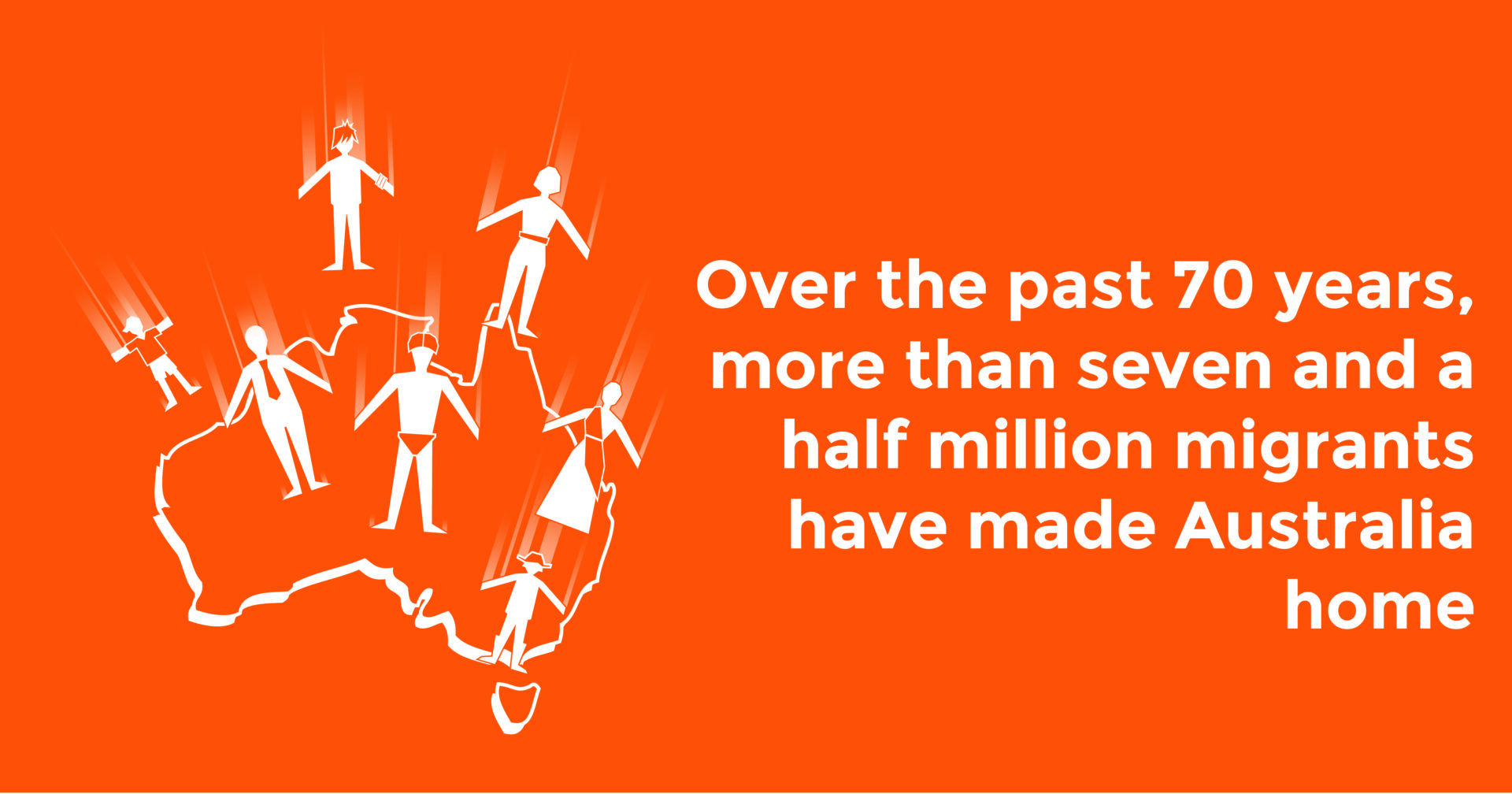Published on March 22, 2024

This week is Harmony Week which focuses on connectedness, inclusion and belonging across cultures. It reflects Australia’s multicultural identity and commitment to building communities where the values of respect, citizenship, courage, optimism, gratitude, integrity, compassion, and responsibility are embedded.
These, of course, are our values. They are not explicitly stated on the Australian Government Harmony Week website but implied by the purpose of this week. Australia’s Governor-General had this to say about Harmony Week:
“Australia is one of the most multicultural societies on earth, comprising people from every corner of the globe. But we are one. And the sum of our different backgrounds, different experiences and different cultures make us a great nation.
Harmony Week is about celebrating the diversity at work in our nation. The theme of Harmony Week goes right to the heart of what the celebration is all about. Everyone belongs, and recognises that Australia welcomes people from all over the world. Diversity and the contributions of those individuals to our society are valued.
In my Australia Day address, I encouraged Australians to reflect on the things that unite us. Regardless of the challenges we face, at our core we are bound by shared values and beliefs.
Bound by an underlying respect for each other, for our right to disagree, and for our institutions, and bound by the characteristics we see throughout our community, compassion, humility, and a gritty determination and willingness to take on the big challenges.”
I find these words inspiring, particularly the focus on respect for those who may be different to ourselves. A central goal of education – beyond the givens of a strong focus on literacy, numeracy, and supporting students in achieving what they need to by the end of Year 12 – is enabling and empowering our young people to demonstrate the compassion, humility and respect for difference that is inherent in the Governor General’s words.

In another section of the Harmony Week website is a series of statements talking to the importance of Harmony Week, a few of them are below:
“Yaseen Hakimi: Australia is one of the world’s most successful multicultural countries, and our cultural diversity is at the heart of who we are.
Jugat Kaur: Over half of Australians were born overseas or have at least one parent who was born overseas.
Sadiqa: Harmony Week is also about inclusiveness, respect and belonging for all Australians, from the Traditional Owners of the land to our most recent arrivals.
Crystal Nguyen: And celebrating that no matter where you come from, we’re united by the Australian values of freedom, respect, fairness, democracy and equal opportunity.”
Reflecting on our incredible diversity, from traditional owners to recent arrivals, learning to be comfortable with difference, and walk with those who are different to ourselves, requires a set of competencies that need to be explicitly taught. It requires the development of intercultural competencies and an intercultural mindset.
In 2014 Erin Meyer published The Culture Map: Decoding How People Think, Lead and Get Things Done Across Cultures. Meyer works for INSEAD and with transnational companies who must navigate cultural differences in order to be successful, economically viable, and grow. Meyer believed she had a good grasp of intercultural communication until, as a facilitator and mediator, she “bombed out” when supporting a top executive for Peugeot Citroen’s plan for his move to China. Meyer made a series of assumptions in that workshop about her Chinese counterpart who was helping to facilitate. As a result, everyone walked away frustrated, and the top executive missed an opportunity to deeply understand how to work with his Chinese counterparts once he made the international move. Missing such an opportunity is potentially costly.
Reflecting on the failures from that workshop, Meyer began to ask herself this question: “Once I am aware of the cultural context that shapes a situation, what steps can I take to be more effective in dealing with it?” (Meyer: 5 – 6) The goal of her book is to provide guidance on how, in a culturally diverse context, to do the following in a way that maximises outcomes and honours cultural differences:
· Communicate
· Provide feedback
· Persuade
· Lead
· Make decisions
· Create a culture of trust,
· Engage in disagreement
· Schedule time.
Building our intercultural understanding is not only a kind and compassionate human-practice to engage in, but it also helps our students build the competencies to be successful in increasingly globalised and multicultural contexts. Meyer’s work highlights that there is both an altruistic and practical basis for respecting, valuing, and inviting difference into our lives.
The Intercultural Development Continuum is a tool we are using here at School to reflect on our place within a continuum of intercultural competence. The continuum talks about five orientations towards cultural differences and similarities. As individuals, depending on our life experiences, stage of life and current context we can move up and down on this continuum.
The first orientation is Denial, and this is where we miss the difference around us. We see everyone as the same, and we might ignore or avoid cultural differences or not really be interested in this difference. Polarisation is where we might judge those who are different to ourselves; we might make dismissive or degrading comments about another culture or language group. In this orientation, an individual or group might be defensive and protective of their own culture at the expense of others or see their own culture as inadequate in relation to others. Polarisation is a normal orientation that emerges when there is a sense of threat or loss: What might I lose if this new group comes into my community? When we are caught in polarisation, diversity feels uncomfortable and sometimes unsafe. If we are in denial, then we don’t even register the difference, or we actively ignore it. Polarisation is a step up the continuum towards greater harmony because we need to see the difference to be able to accept it.
Minimisation, the next stage in the continuum, is where we de-emphasise difference. We often do this in schools by focusing on commonality (what unites us), and this is not a bad thing. When building a school culture, we want to cultivate a shared sense of purpose and identity. School rules and values are part of this: these are our shared expectations and ways of being within a school. However, the danger with minimisation is that we focus so much on sameness that we forget that we can be similar yet different. Human beings are complex and not the same. We can, though, have a shared code of conduct/expectations while recognizing and embracing the differences and diversity that characterise school communities.

The next orientation is acceptance: “with an acceptance orientation, individuals recognise and appreciate patterns of cultural difference and commonality in their own and other cultures.” In this orientation we are curious to know more and are reflective. We reflect on our own biases and assumptions. In a school where acceptance is the orientation, diversity feels understood because we can “recognise and accept a broad range of perspectives, values and behaviours.” However, we may struggle to act and make decisions because the focus is so much on acceptance and recognition of diversity that it is hard to chart a way forward. In a sense, diversity and difference can become overwhelming in an acceptance orientation.
The last orientation is one we aspire for at HVGS, and it is our aspiration for our students. It is the orientation that gets us closer to the spirit of Harmony Week and to being able to engage with the cultural maps developed by Erin Meyer. With an adaption orientation, differences are acknowledged and celebrated and fundamental to the way the community or group functions. Behaviours and decision-making can be adapted to match the context and circumstances and the complexity that comes with diversity is seen as an opportunity rather than paralysing. With this orientation, individuals are able to move between perspectives and recognise that others with their differences may also be right. Actions and decisions honour difference while also upholding the values and expectations central to the organisation. Policies and procedures reflect the diversity of the community and look at ways of maintaining that while establishing clear boundaries for practice.
We want our students to be adaptable and agile in moving between different cultural frameworks to better understand others and to choose the best course of action depending on the context in which they are working.
Harmony Week is about cultivating adaption in the Australian context. At HVGS we embrace this as an opportunity to pause and reflect on the diversity of our community and continue to look at ways in which we can respect this diversity and build it into our ways of working.

